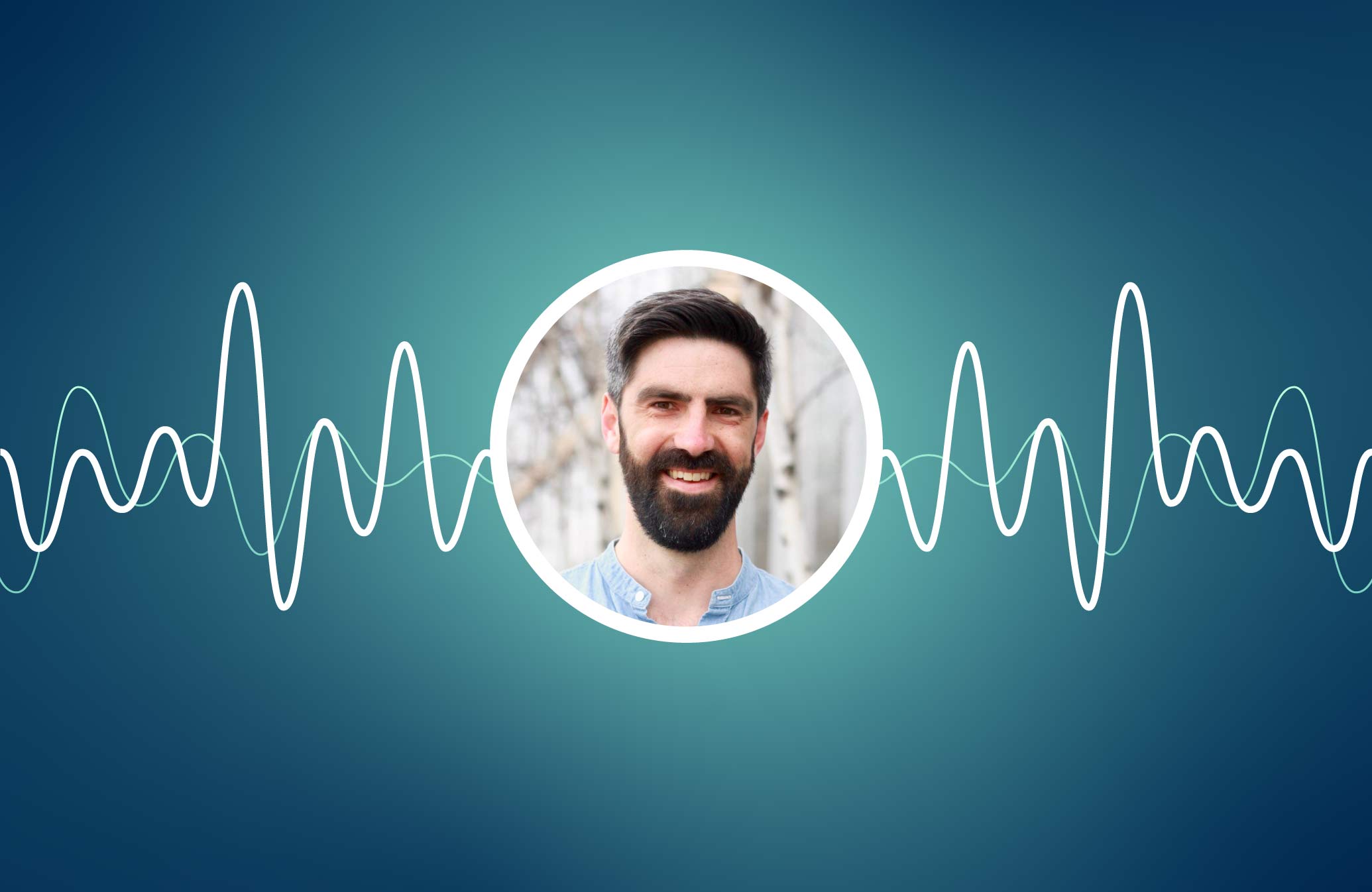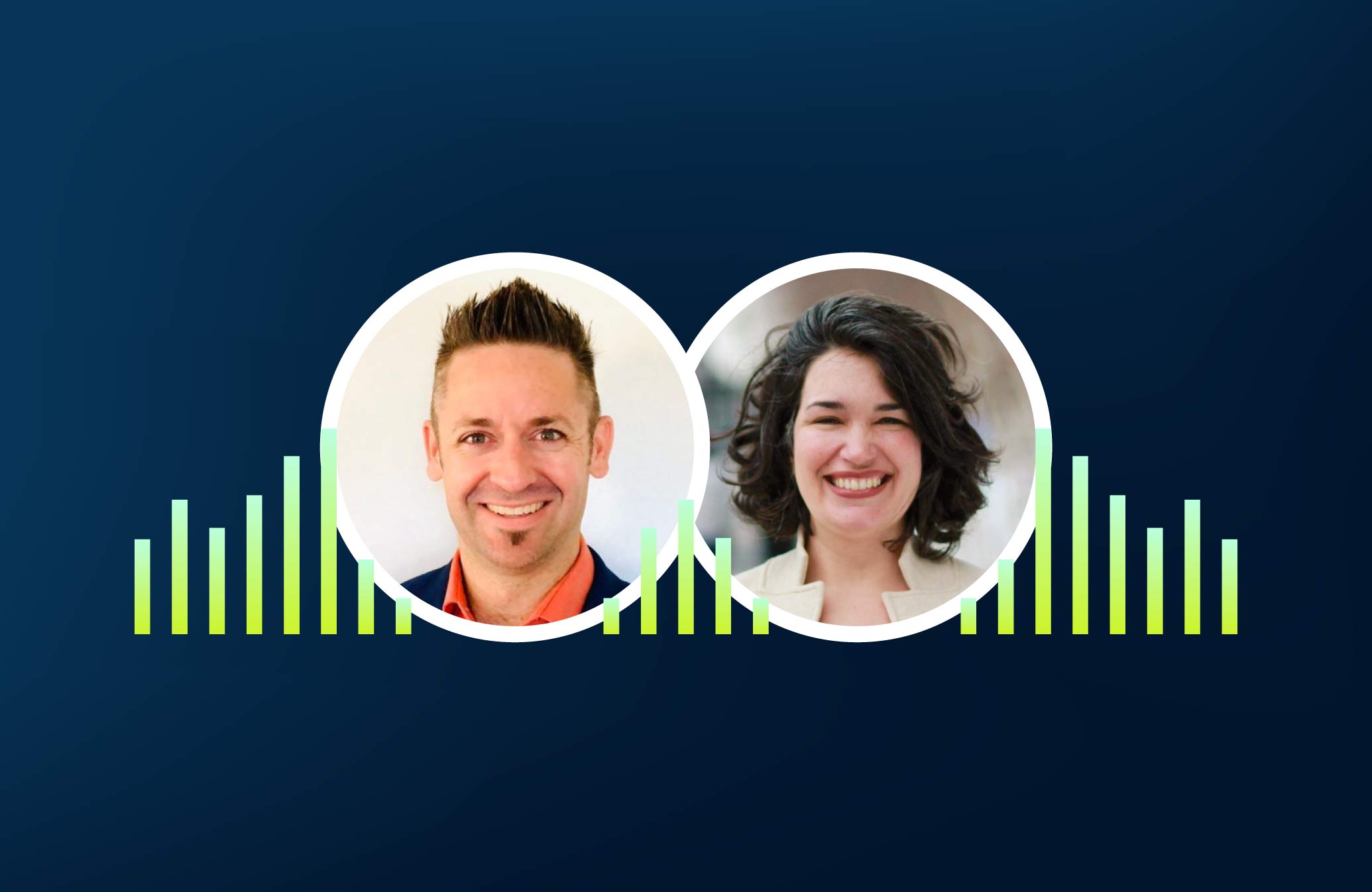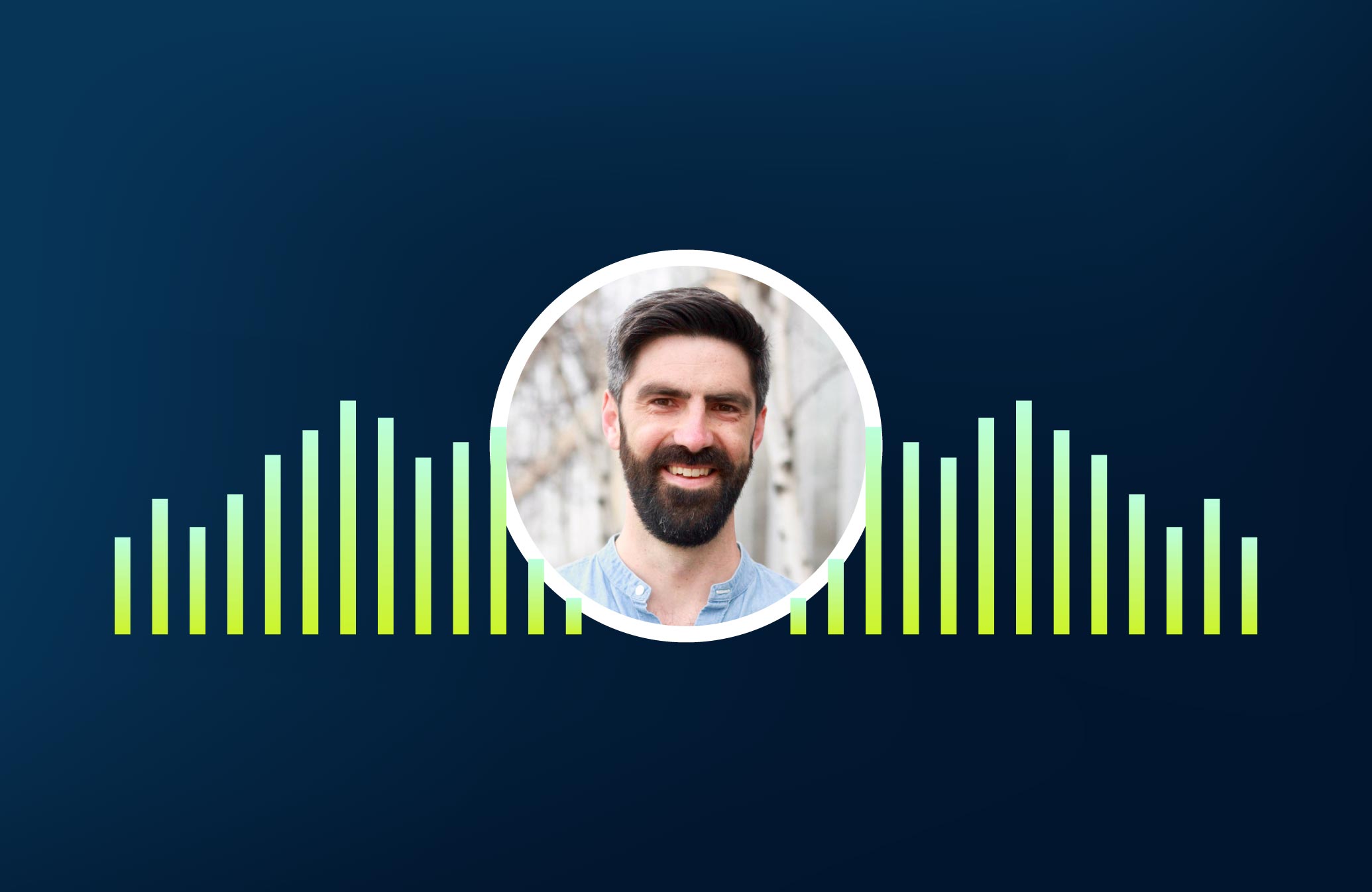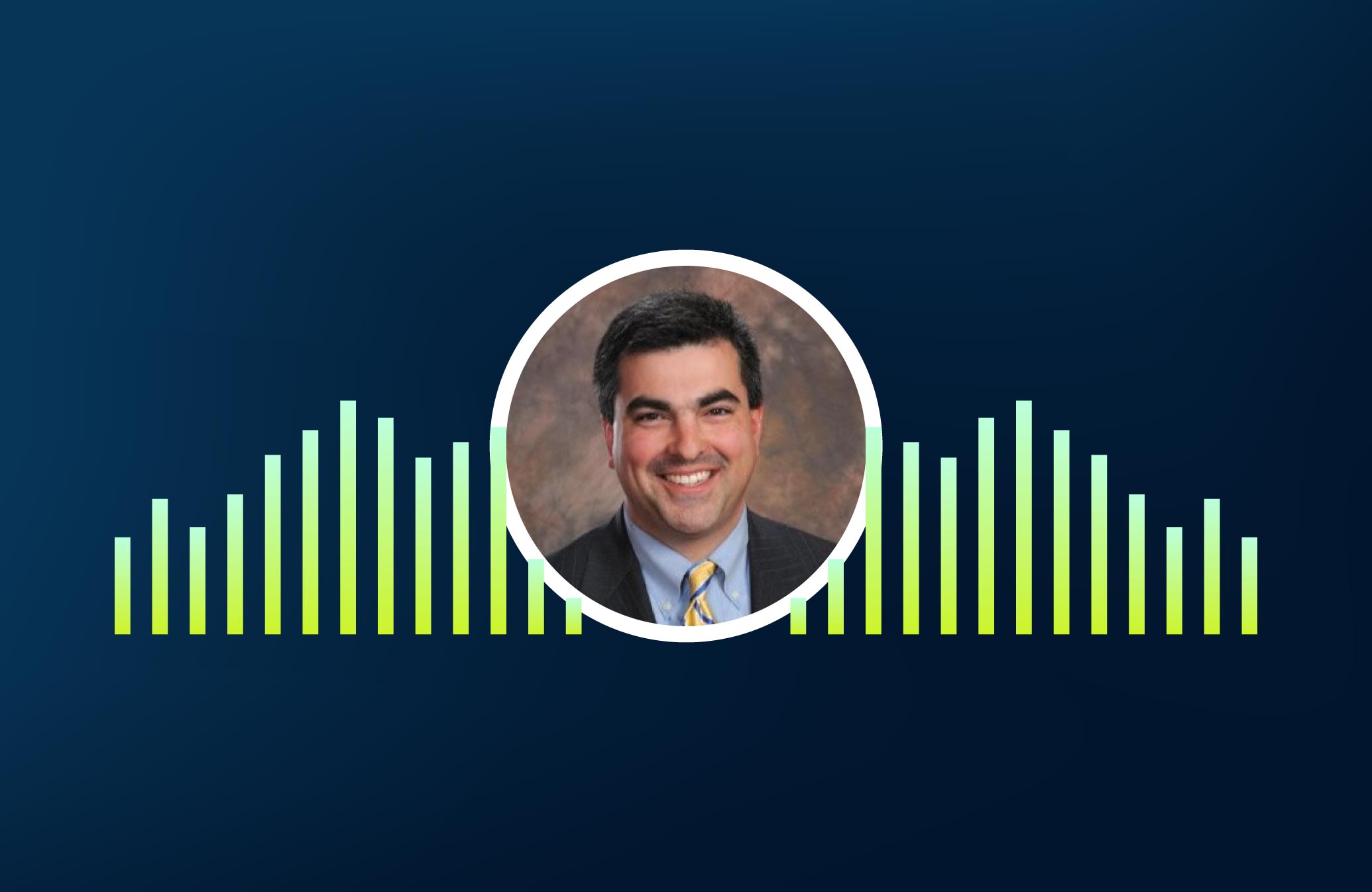Listen Now
Episode Transcript
Announcer [00:00:00] Welcome to RadioRev, podcasting from the heart of healthcare in Minneapolis, Minnesota. This is the podcast for change makers looking to do more than just health engagement. It’s about getting people to take action and do things that actually improve their health. It’s a radical idea, right? So we’re talking with the leaders, innovators, movers, and shakers who are bringing new ideas, inspiring others, and leading the way.
Jenn [00:00:26] My name is Jenn Dellwo, and this is RadioRev. Last year’s flu season was one of the worst we’ve seen in recent history. The CDC reported that 80,000 people died as a result of flu symptoms. That is a staggering number, and healthcare organizations are working hard to keep people healthy and motivate them to get flu shots. But it’s not as simple as it may seem. People have variable reasons why they do get a flu shot and even more diverse reasons why they don’t. Today, we’re talking with Matt Swanson, one of Icario’s human-centered design experts, to talk about the different ways behavioral research can motivate people to get a flu shot and what’s influencing others from getting one. Thanks for being here today, Matt.
Matt [00:01:02] Thanks for having me.
Jenn [00:01:04] I’m going to start by asking you, what’s your favorite ’80s song?
Matt [00:01:09] Favorite ’80s song…boy, it’s hard to remember which song comes from which decade, but I’m putting myself back in the ’80s. I’m going to say “Burning Down the House” by Talking Heads. {music plays}
Jenn [00:01:31] That’s a fun one.
Matt [00:01:31] I have strong memories of my dad playing that, and me dancing around in my parents’ room to that song. It was probably my first song as a child.
Jenn [00:01:42] I love that. So you have a really interesting role here at Icario. Tell us a little bit about it.
Matt [00:01:49] I lead behavioral research here. And what that means is it’s kind of a blend of qualitative, generative design research within applied behavioral science and behavioral economics, working in close partnership with the data and analytics team here. So that…essentially how it ends up functionally working is we generate hypotheses and understand qualitative things about human beings. And then the data team is able to apply those to the programs that we run and the way that the system handles those programs and measure the outcomes and see where we’re wrong, where we’re right, and how we can better optimize our system, and how we can better generate new hypotheses going forward for how these things run and how we can get people to take specific actions.
Jenn [00:02:47] Awesome. And you’re also a voice actor.
Matt [00:02:49] That’s right. Yeah. I have the honor of doing the intro for RadioRev. That was my first time on radio. So thanks for letting me do that.
Jenn [00:02:59] Oh sure. It sounds great. So at the start I mentioned a statistic from last year that 80,000 people died from the flu. As far as your research goes, are there any major differences in the flu season this year versus last year?
Matt [00:03:13] I think that at least from where my team sits and what we look at, the major differences are going to be the salience or how front of mind those sorts of numbers are or what it means for a lot of people to die from the flu. And there’s a few different things that are going to affect people’s behavior year to year. So you see a lot of media coverage over how effective the flu vaccine is, what kind of impact it’s having on public health. I think we’re seeing a lot of good press that’s trying to push people to take this more seriously because it was such a red-letter year in terms of hospitalizations, deaths, complications, all these things. So I don’t know exactly—we try to stay agnostic about the actual science of it because some people you find are pretty agnostic about the actual science of it—and try and really put ourselves in the shoes of what an individual in rural Pennsylvania or downtown Miami might think and really put ourselves there rather than in the shoes of the scientists working in the lab.
Jenn [00:04:23] Sure. That makes sense. So do you think when people hear that number, 80,000 people died, does that have any sort of effect on what they’re going to do, or do they just think, “Wow, that’s crazy!” and not do anything?
Matt [00:04:36] It’s a good question. It’s a really complex answer. The short answer is,I don’t know, because people are so different in how they interpret these things. There are a few different aspects to it. The number 80,000 is tragic and seems to have gotten the attention of a lot of people. And so then you just end up with a kind of background radiation of impressions going into people’s heads. So facts can be helpful, especially when they’re repeated in the way that they are, especially at the margins. One of the groups of people that we like to talk about are the “lazy busies,” is what we call them. It’s probably the most relatable for you and I and, say, the audience, it’s people who would get a flu shot, have no special or particular thoughts about it. But it’s more a matter of convenience, ease, and then just understanding where to go. We heard a few times in fieldwork, “If you had a flu shot right here, I’d take it. But I’m not going to drive downtown and go get one.”
Jenn [00:05:46] Okay, so the CDC recently posted an infographic on their Instagram, and I felt like it was perfect for us to talk about. It showed the benefits of the flu vaccine in the 2017 – 2018 year, with stats like the estimated number of flu illnesses prevented by vaccination during that season was 7 million people, which is the population of New York City. The estimated number of flu hospitalizations prevented by vaccination during that year was 109,000, which is about the number of vehicles crossing the Golden Gate Bridge each day. So I do think it’s really interesting how they’re trying to tie it back to real things that people can understand. That’s a lot of people crossing the Golden Gate Bridge every single day. And the final one is the estimated number of flu deaths prevented by vaccination during that season was 8,000, which is twice the number of hospitals in the United States.
Matt [00:06:41] Wow, yeah. See, this stuff is really interesting because as a basic rule what we find is that facts and statistics don’t work when you’re trying to get someone to do something. It’s not that they don’t have a role, but they’re not the pivot point that’s going to get someone to change their mind. But there’s a few really good things that the CDC is doing here, especially the thing that you pointed out here when you say the population of New York City and you give someone something really concrete to hold onto. The number 7 million is meaningless. The number 8,000 is meaningless. But twice the number of hospitals in the United States, that means something. You start to imagine the people inside of those hospitals and what that means. And even I walked away, until I’m rereading this, I had a different impression. I thought that what they were saying is twice the number of people in all of the hospitals in the United States, which probably works to their benefit. Now, how that becomes an image in my mind that gives me an impression, that gives me some sort of motivation or not motivation to do something in the world.
Jenn [00:07:51] Right. So you just spoke about this a little bit, but I’ve heard you say before, “We can’t fact people into action.” What do you mean by that?
Matt [00:07:59] So there’s a couple of things. I’m being…I’m intentionally poking the bear there because we work in a really interesting and challenging industry. And when I work with designers and writers and developers trying to make something that is going to influence someone’s behavior, one of the challenges that we have in this industry is the central role of regulation and clinical evidence and all of those things. And those things are really important and amazing tools and have given us huge advances in how we work as a society and how healthcare works for us as a society. The challenge is that none of it’s personal. None of it has any meaning for an individual. People don’t care about their BMI. They care about feeling good about themselves, having people around them perceive them a particular way, having a particular image in society. People don’t care about their blood pressure. They care that their doctor says that they’re healthy and that they feel good when they go out and do their gardening or when they go for a hike, or that they’re going to be able to make it to their granddaughter’s wedding or something like that. So there’s such an anchor on stats that matter for public health and that matter for population health and that are the real wonky levers that we have as a society to try to bend the cost curve, to try to make people healthy, to try to improve lives across the millions of people in the United States. The trouble is that it’s hard to make, say, a flu vaccination argument that’s based on the population of the United States. It’s hard to explain to someone who doesn’t intimately understand how healthcare works and how healthcare economics works to tell them that if enough people get a flu shot, as a country we will spend less on healthcare; as a country fewer people will have complications; as a country, fewer people will die. Even that is not necessarily always effective. Again, pointing to what the CDC did, they took that extra step to make it concrete. But you still gotta believe in the premise in order for it to have any effect on you. And so what we talk about often on the team is…we call them frames. So one frame is that it’s important to get a flu shot because it will reduce the number of deaths in the country. If I think that flu vaccines are poison propagated with malicious intent, that’s not going to be super convincing to me because maybe you’re lying to me about that number in the first place. We spend a lot of time with people in anti-vaccine movements, and we’re able to kind of pull apart some of the ways that they are actually not a unitary thing and start to understand that everyone has different levels of frames. So someone who doesn’t believe in the flu shot or doesn’t believe that even the flu shot is going to affect whether or not they get the flu or doesn’t care or whether or not they get the flu because it’s like the cold might care about protecting their newborn grandchild, might care about whether they’re going to be able to make it back out into the garden come spring. So the closer we get to a more, say, existential frame, my life, my well-being, the people who are close to me, their well-being, and then way out on the edge of those frames is population health. So what we try to do is address a competing frame. You should get a flu shot because you are a caregiver of someone else. So how does this impact the people who are really close to you? So even though you may not believe in a flu shot, making it personal, making it about a competing identity that you have will at a bunch of different margins, at a bunch of different borders, we now have opened up new opportunities to start to have a conversation with people about their beliefs. So that’s part of what I mean. I always wish that the way that we could run these programs was that I could go out to every single one of our clients’ members and just talk to them. Because if I had an hour with them, I could understand the challenges that they face, and what they’re looking to do with their lives, and why these things that are important to our clients are important to U.S. healthcare, how those fit. But we can’t do that, right? We try to do things at scale. That’s why we work with a data science team. That’s why we work with so many talented engineers. That’s why we build the systems that we do. That’s why we have the self-learning technology that we do. So what we end up having to do is aggregate a lot of these beliefs and a lot of the triggers that work or don’t work for people and start to apply those in how we outreach. At this point, the best lever we have is communications coming into someone and the sorts of things that they see, kind of like the CDC Instagram post. So trying to get to where they are and then have a message that’s extremely short but does a lot of lifting just inside of that tiny piece and activate them in just a few lines or just an image or just trying to connect this identity that we think that they have to the beneficial health outcome for the country. So anyway, that’s how we apply it. I think it’s a really interesting model that we’ve built.
Jenn [00:13:51] Definitely. So thinking about the organizations that Icario serves, what are the challenges for them when it comes to engaging members to take preventative health actions like getting the flu shot?
Matt [00:14:01] Yeah, so I’ve worked in large organizations, and that’s part of why I came to Icario is because there was an opportunity to solve it or at least start to address it and really get in at the root level. The predominant impression that I got is that inside of these organizations, you go so deep and you know so much about healthcare, and you know so much about how all these levers work and why the flu shot is important that you just absorb it. It becomes part of who you are. It’s so instinctual that this is the right thing to do. And it starts to align with your morals and who you are. And so then the impression becomes, oh, we just need to educate people. We need more education. And yes, education, awareness, all those sorts of campaigns are super important. Like this CDC one you bring in. This is a great awareness campaign, but there’s a big gap between awareness and action. So we’re not necessarily addressing awareness. We’re trying to close the loop on a lot of these things. And the thing I take away from the way that these organizations, the way our clients will sometimes talk about it, and no fault to them, they’re passionate people trying to solve a challenging problem, is that the output ends up expressing an underlying belief that if our members, if our patients, if the people who interacted with us knew what we knew, they would believe what we believe. And they have that, and it makes sense. It’s what all of us tend to think. We all believe that we absorb facts and then we create a set of beliefs based on those facts. And actually, evidence shows, research shows, even tracking neurobiology shows, that it’s completely inverse. You start with your beliefs and then you evaluate all of those facts through those beliefs.
Jenn [00:15:59] You can pick the facts that you like the most.
Matt [00:16:01] You could. Yes. And you will interpret those facts differently. And in fact, expertise—you would think, oh, experts are probably much better at being objective about facts. The more of an expert you are on a particular subject, the more likely you are to reject competing evidence.
Jenn [00:16:17] Interesting.
Matt [00:16:17] So beginners’ mindset is a real thing, and usually that’s why new, innovative things come from total beginners who don’t have the same experience the experts do.
Jenn [00:16:28] That makes sense. So I’d like to switch gears and talk a little bit more about the flu research that you’ve done. Can you walk us through the program?
Matt [00:16:36] Yeah, absolutely. So I’ll start with the underlying approach that we take to all of the programs. It’s great because I got to come in here and work with data and analytics and engineering to really build this from the ground up so that we can start by marrying the qualitative and quantitative. And by really challenging our beliefs at a ground level and building the technology based on that. So the way that we started was to frame up a particular project, which was about preventive actions that people might take. So there’s a broad space in prevention. We’re taking a slice off of that. This isn’t necessarily preventing diabetes or encouraging weight loss or things that are about habits over time. This particular study and effort were around preventive actions. Flu shot. Go to an annual wellness visit. All those sorts of things where it’s a moment in time because we thought that that was really interesting and pretty under explored. There’s a lot of research out there about building up habits over time and all the little triggers and systems you need to do to create that. We were curious about how do people think about a particular action, and a flu shot was a really great one to start to reveal that, because there’s a lot of controversy about vaccination. The flu is this thing that touches everyone’s life, but in really different and nuanced ways. So we started with that, gathered as much information as we could about what the flu is, why it’s important. What’s the history of influenza and the vaccination? Why isn’t there one vaccine that you get when you’re a child? Why do they have to make one every year? Why do pandemics happen with influenza? And then use that to help us understand public policy, the approaches that the industry takes. And then once we have all that information, my team then recruits a bunch of people from a range of walks of life, depending on what we’re looking to get out of it specifically, and we just go talk to them about their lives. So the way this worked is we can be focused on Medicare and Medicaid because flu vaccination is measured in those populations. Urban, rural, the whole spectrum. And we went to their homes, and we saw what their life was like. They talked to us about what’s important in their life, family, friends, their career, sometimes even just their routine. We talked to them about their health. What does healthy mean to them? What does it feel like when they’re not healthy? What would it look like if they had achieved the health that they wanted? A little bit about the context of their health—do they have a doctor? Do they have insurance? What do they think about those things? How do they find them? How do they find a doctor? And then a little bit about what do they do when they’re sick? Who matters when they’re sick? Who gets sick around you? So we can start to really contextualize where does a flu shot fit in? So, for example, we talked to one man who lives in a group home who’s recovering from an opioid addiction and is just kind of getting his life back at this point and really focused on meetings, really focused on keeping his job, really focused on feeling like he’s doing the right thing. You can tell it takes all his energy just to hold those pieces together. And so when he believes that getting a flu shot is going to make him sick, even if it’s for a little bit, and that might lead him to lose his job, which might lead him to lose everything that he’s gained, which might lead him to lose his place in the group home, which might lead him back to using again, and then he would lose all the progress that he makes. What can we possibly do to help him overcome those things when everything in his life is so built around just keeping steady? So that helps us understand one end of the spectrum. And then another end of the spectrum, which I’ve already touched on, is “I’d have a flu shot right now if you had one available for me.” And there’s all of these things in the middle where it’s—if I believe that my health is most closely associated with food and the food my mom made, my mom being an Italian immigrant and me being a first-generation Italian person here, and me drawing a lot of meaning from that history and that food, I’m going to believe that most of my health comes from those things. That’s where we got that great quote, “I believe a good glass of wine is better than any shot.”
Jenn [00:21:23] Okay. Yeah, I was going to ask you about that.
Matt [00:21:27] Yeah, she was great. She was really interesting because everything for her revolved around her Italian identity and the food, even the socializing and going out on Friday nights to the restaurant that’s owned by someone in her community where she and her friends go every Friday. That’s part of her being healthy, is maintaining that social group, then going out and having a glass of wine and whatever dishes she’s looking to get and then having people over the next day and cooking for them or having her kids and their grandkids over and cooking for them. And so there’s not really a way when we’re talking in that frame about food being nutrition and health and all of those things. There’s not really a way for us to start to penetrate that. But she also had the identity of a caregiver and hadn’t really associated influenza or vaccination with any of those things, which started to give us this idea about how competing frames can start to help us out.
Jenn [00:22:27] Was there anything that came up in these interviews that surprised you?
Matt [00:22:30] Absolutely. It was a random sample of people, and we ended up getting a lot of people who absolutely would never get a vaccination period, influenza or otherwise. And what surprised me is that I thought that I understood what that meant. And it was actually a much more diverse set of perspectives then I really understood. And what I came to find is that the people who got their flu shots religiously had much fewer facts available to them about what a flu vaccine was about when influenza was than the people who would not get the vaccine.
Jenn [00:23:11] Interesting.
Matt [00:23:11] Reasonable people can argue about whether those facts are true or not. But for these people, they are true. And so that’s part of where our having to come back and directly address with clients and with our organization affecting people is not necessarily going to help because the people whose minds need to change, they have all sorts of facts available to them. You might disagree with the facts they have or might disagree with their interpretation of those facts, but giving them new pieces of statistics, new pieces of information, they already know these things. You do not need to provide them with more education.
Jenn [00:23:43] So with all of these insights, how are these actionable to health plans?
Matt [00:23:50] It’s a good question. And it’s hard. It’s actionable in really broad ways. So it’s not change this one little switch or move this little lever or now say things in this way to people. I think the first thing that has to be reckoned with is that healthcare has a pretty bad brand. Expertise is less and less valued in society today, in American society today. Not amongst everyone, not for everyone. But for a lot of people, the stature that expertise and medical expertise has, has really taken a big hit. So if healthcare is a bad brand, and we can’t lean on it as hard as we would like to, I think the industry really has to start grappling with what voice is speaking to members. Who is it who is actually influencing what people are interested in when they think about their health? And the people that are having that impact are often not places like, say, the CDC or the NIH. Those are not reaching the audiences that we want to influence. If you’re looking to the CDC or the NIH for pieces of information, you generally accept the advice that they’re going to give, and you’re already kind of asking the questions that we want you to ask or that the industry would want you to ask. But people who have different sets of questions, which are things like “Why should I get a flu shot at all?” Or like, “What do I need to do to be healthy in the particular ways that I believe I should be healthy?” They’re not asking the questions that the industry would want them to ask. And so we can’t be answering those questions, assuming that that’s what they’re asking. So we need to really be thinking about how are things being influenced? Is it about—is it entering more into the social media influencer world? I don’t know. That might be a more effective route to a group of people who aren’t really being tapped with any of these things. Is it about creating more lifestyle branding or entering more of a lifestyle space? We see a lot of movement in that in the industry. It makes sense to me, starting to connect actual behavior and actual things that people are interested in with outcomes. It’s a big question. But what we can do—I’ll give a short-term solution, which is that what we find is that different messages work differently for different people. If we take a random group of people, can we try and motivate them through five different ways of saying you should get your flu shot because of facts. You should get your flu shot because three out of five people like you get a flu shot. You should get a flu shot because the people who are important to you will be better off. If we do that, and we assign it randomly, we will not perform as well as if we take that and we optimize it for the kind of person that they are. And we find all the time pretty significant improvements by applying the right kind of message to the right person. So even just saying words differently, showing someone a different image associated with those words has material outcome on how a person is motivated. So I would advise clients to not be sending one mailer, one kind of email, make one kind of call when they’re talking to these people. I know it’s hard, but you need to start advancing and leveling up the spectrum of communication that you’re offering to your members and your patients.
Jenn [00:27:31] Sure. It sounds like personalization is the way to win.
Matt [00:27:34] Exactly. Yes.
Jenn [00:27:37] You’ve done all of this incredible research and have talked to so many different people with different perspectives. How does that help you do your job more effectively? Or does it muddy the waters?
Matt [00:27:47] I love this question. I love this question. I can’t tell if you set me up for this because it helps me do my job more effectively because it muddies the waters, because the waters are muddy. People are really complex. They’re motivated by weird things. They have all sorts of internal contradictions, and if you think that you’re free from that, you’re totally wrong. If you start really stepping back and evaluating why you do the things you do, you’re going to find that you have a lot of behaviors that everyone else around you notices, but you have no idea that you’re doing, or even people who are close to you might not notice because they have the same sort of beliefs, same sort of behaviors. So, yeah, it absolutely helps me do my job because it helps me insert reality into communication, into technology, into how we run things here. And having that reality helps us affect reality and affect the outcomes that that reality has. So we can actually be super effective by me coming to the table and saying, “I’ve got this big bucket of muddy water, and it’s going to help us understand what we have to do a little bit better.” It’s more complex. It’s harder, but I think it’s more meaningful, and it really makes me excited about what we’re doing.
Jenn [00:29:00] Well, thanks so much for being here today.
Matt [00:29:02] Yeah, this is fun. This is great.
Announcer [00:29:04] Thanks for joining us for the RadioRev podcast, brought to you by Icario. If you found today’s conversation as informative and energizing as we did, please take a moment and subscribe to the podcast. As always, we invite you to learn more about us and check out all of our content at dev-revel-health.pantheonsite.io/RadioRev.
Inside the Episode
This episode features an interview with Matt Swanson, human-centered design expert. Matt talks about the different ways behavioral research can help to understand why some people get flu shots routinely and what’s influencing others from getting one at all. In addition, Matt dives into the following discussion:
- The definition of “we can’t fact people into action”
- Key findings from Icario’s behavioral research related to the flu shot
- How different perspectives may or may not muddy the waters when it comes to behavioral research
To keep the conversation going, connect with Matt on LinkedIn.
“Facts and evidence aren’t personal—they don’t have any concrete meaning for an individual. They don’t convince people of anything.”
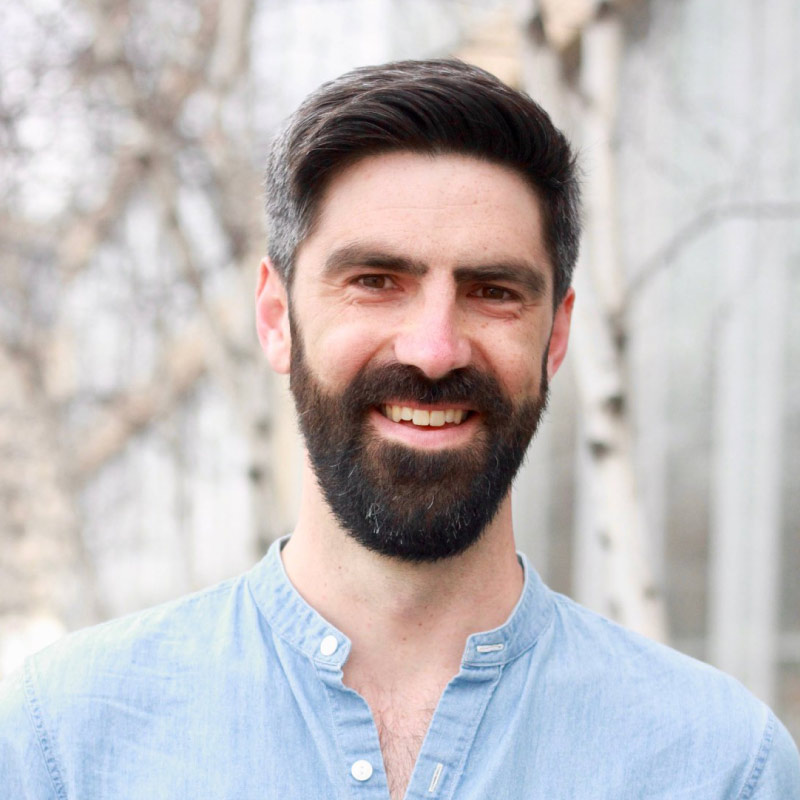
Matt Swanson
Director of Product Design
Can’t get enough of RadioRev?
Check out all of our episodes to stay up-to-date on the latest in healthcare innovation, social determinants, and health action.

